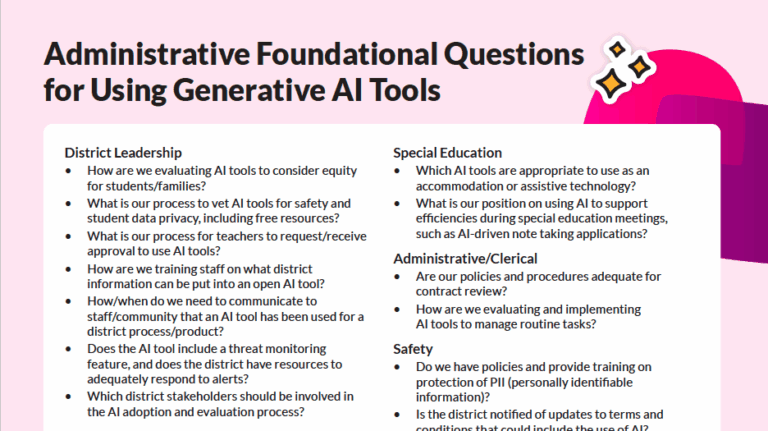This resource is provided by ACSA Partner4Purpose Keenan.
“A recent FBI report indicates that the frequency of active shooter incidents in the U.S. reached an average of 20 per year in 2014/2015. This is a concerning statistic when you consider that nearly one quarter of those incidents occurred on the grounds of educational facilities. Add in attacks other than active shooter incidents and it becomes clear that educational facilities are facing a significant safety problem.” – Schweit, Katherine W. (2016). Active Shooter Incidents in the U.S. in 2014 and 2015. FBI, U.S. Department of Justice, Washington D.C. 2016.
Many security experts predict that the number of attacks on western educational facilities will only rise in coming years, primarily due to lone wolf attacks inspired by foreign terrorist organizations. In fact, internet publications such as Inspire Magazine actually encourage unprovoked attacks on western educational staff and facilities to further their cause.
Unfortunately there is no single prevention strategy that will protect your campus 100% of the time. So, short of installing a wall and moat, how do you create a safer environment for staff, students, and visitors? The answer is to implement multi-layered security measures. Much like a laminate construction beam, the program becomes stronger and more effective with each additional layer.
Deciding where to start can be challenging. There are no steadfast rules dictating how to best implement an effective security program.
One important thing to remember is that doing SOMETHING is better than doing NOTHING. Below is a list of five layered security measures that will help increase campus safety while creating some momentum in your overall security plan.
1. Adequate perimeter fencing
Can you name an important military or government installation in the U.S. where fencing is not a key component of site security? Installing adequate continuous perimeter fencing is a very effective way to control ingress/egress and discourage unauthorized access to a site.
- K-12 school districts should strive for continuous perimeter fencing at all campuses and high value sites.
- Community colleges typically do not utilize continuous perimeter fencing; however, districts can still benefit from strategic placement of fencing in areas such as day care centers and high value areas.
Campus fencing should always be a minimum of six foot tall and should be comprised of durable materials such as climb resistant metal chain link or vertical metallic support fencing. Effective fencing should be esthetically pleasing and should not block clear visibility to the interior of the campus. Things like low shrubs and vegetation can be utilized to soften the appearance of perimeter fencing.
2. Keep occupied classroom doors secured
Aside from the attacker breaking through a locked glass office door during the Sandy Hook School shooting, there are no documented incidents where the attacker breached a locked door to reach their intended victim(s).
School attackers know that the police are coming and their time is limited. In order to accomplish their mission, they have to gain access to their intended target(s) quickly. This is why students, staff, and visitors are most vulnerable during the first moments of an incident when the attacker has the element of surprise and a lockdown has not yet been initiated.
Keeping occupied classroom doors locked denies the would-be attacker easy access to intended victims and increases time for law enforcement to respond. This no cost solution can drastically reduce the probability of mass casualties while also preventing parental abductions and disruptions associated with non student intrusions.
3. Guard against vehicle born attacks
In July 2016 we witnessed a horrific terrorist inspired vehicle attack on the Bastille Day parade in Nice, France. Thankfully we haven’t experienced similar attacks on the Homeland; however, educational institutions should still address vehicle vulnerabilities before something happens. Careful placement of vehicle barriers can reduce the possibility of a vehicle attack occurring on your campus.
Start by conducting a thorough survey of your campus identifying all places where a vehicle can be easily driven onto a non vehicle area. During the survey, emphasis should be placed on pedestrian paths, openings, and congregation areas adjacent to or intersecting with streets and parking lots.
The simplest way to thwart vehicle attacks is to install engineered vehicle bollards; however, these devices can be less than aesthetically pleasing. Some common alternatives to engineered bollards include things like concrete planters, retaining walls, fencing, boulders, and landscaping. Just make sure that any alternative barriers are designed in a manner that provides adequate protection against a vehicle strike.
Aside from a deliberate attack, vehicle barriers also offer the added benefit of protecting property and persons in the event a vehicle accidentally leaves a designated driving area.
4. Regular staff training
You have probably heard the old adage, “Train as you do – Do as you train.” Military and law enforcement understand the importance of developing muscle memory through ongoing realistic training. The one thing you can count on is the best plan will fall apart during a stressful situation if you have not properly planned and prepared ahead of time.
Your staff doesn’t typically spend their time pondering how to react should they fall under attack. In fact, unless they have previously attended training, they probably won’t think about it until it is too late. Empowering staff to survive an attack comes down to providing them with realistic multithreat training.
Optimal staff training should include, but not be limited to, the following topics:
- Principles of “Run, Hide, Fight”
- Barricade techniques
- The psychology of an attacker
- Red flags
- Law enforcement response
- Safer rooms
- How to utilize cover and concealment
- Identifying improvised weapons
- Adopting a survival mindset
Although any training is better than no training, one session per year is not enough to be properly prepared. Try to schedule at least two sessions per year.
When choosing a vendor or law enforcement agency to train your staff, you should make sure their curriculum is interactive. They should get staff out of their seats and allow them some hands on participation. Their training should provide multi-threat approach rather than only focusing on active shooter. If possible, their training should be presented in the staff’s actual work space in order to provide a realistic experience.
5. Anonymous reporting programs
On September 7, 2009, Castle Rock, CO police and school officials credited the Text-A-Tip anonymous reporting program for exposing a student’s plan to wage a Columbine style attack on fellow classmates.
It is a fact that anonymous reporting programs work by decreasing incidents of bullying, harassment, suicide, and threats of violence that would otherwise go unreported without an anonymous program.
Recent studies show that 65% of victims without access to anonymous reporting said bullying was not reported to school officials. Even when a victim had suffered an injury, the incident was still not reported 40% of the time. Anonymous reporting programs empower students, staff, faculty, parents, and community members to take some responsible for their own safety and the safety of others within their school.
Some school districts fear that implementing an anonymous reporting system will result in students submitting false reports and subsequently overwhelming administrative staff with needless investigations. In fact, most school districts that implement an anonymous reporting program experience the opposite, reporting that students want the bullying and harassment to stop and they overwhelmingly support the system.
There are many ways to improve campus safety and security. Districts should start by assessing all existing security measures and from that, develop a strategic layered security plan. Take your time and think long term. Too often, new security features are implemented without adequate forethought or consideration of how they will impact the macro plan. If you would like help mapping out your layered security plan or need assistance conducting a comprehensive assessment of existing security measures, Keenan & Associates can help.

































